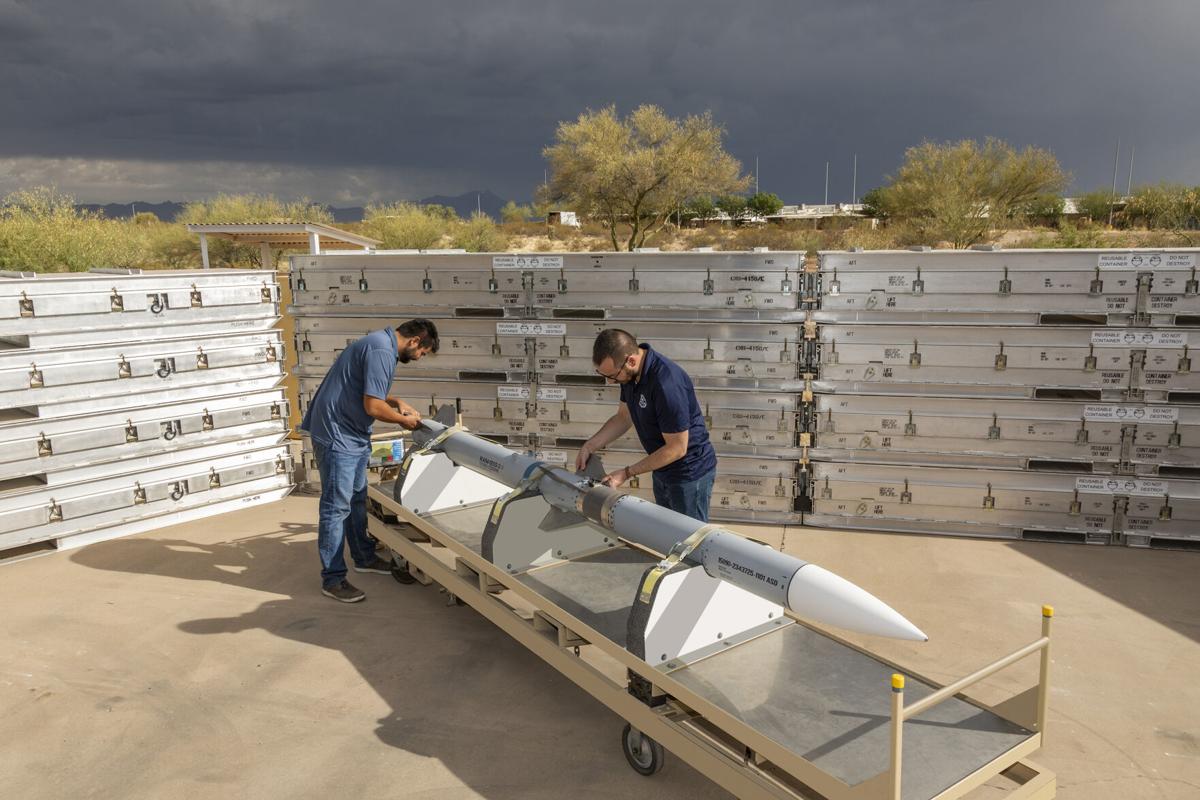Raytheon’s Tucson operation was awarded a $1.15 billion contract for production of the Advanced Medium Range Air-to-Air Missile (AMRAAM) and related work for the Air Force, Navy and 18 foreign allies — including Ukraine.
The work will be performed in Tucson, where Raytheon is the largest employer with about 13,000 workers at several factory sites, and the contract is expected to be complete by January 2027, according to a Defense Department contract notice.
About 40% or nearly $450 million of the contract value is for unclassified foreign military sales to Bahrain, Belgium, Bulgaria, Canada, Finland, Hungary, Italy, Japan, Netherlands, Norway, Qatar, Saudi Arabia, Singapore, South Korea, Spain, Switzerland, Ukraine and the United Kingdom.
The latest production contract includes an unspecified number of missiles, missile telemetry systems, spare parts and production engineering support.
First fielded in 1991 and significantly upgraded over the years, the radar- and GPS-guided AIM-120 AMRAAM is one of the most widely deployed air-combat missiles in the world, in use by 40 nations.
From Kosovo to Ukraine
The supersonic, all-weather air-combat weapon has a reported effective range of 35 to 80 miles, depending on the version. It has been test-fired more than 5,000 times and credited with air-combat “kills” in conflicts over Iraq, Bosnia, Kosovo, India and Syria.
The AMRAAM also is used with some ground-based air defense systems.
In its effort to repel Russia, Ukraine launches AMRAAMs from the National Advanced Surface-to-Air Missile System (NASAMS), which was jointly developed by Raytheon and Norway’s Kongsberg Defence.
The U.S. delivered two NASAMS batteries to Ukraine late last year and in December, the U.S. Army awarded Raytheon a contract worth up to $1.2 billion to deliver six additional batteries.
Last September, Raytheon was awarded a three-year, $972 million contract to upgrade AMRAAMs with new hardware and software for the U.S. Air Force and Navy and 19 allied countries.
The latest version of the AMRAAM costs about $950,000, and the Air Force and Navy are seeking to buy a total of 831 of the missiles in the Pentagon’s pending fiscal 2024 budget request.
Multi-year buy debate
The AMRAAM is one of 15 munitions programs Congress approved for multi-year contracting in last year’s National Defense Authorization Act, a policy document that generally prescribes appropriations.
Seen as a way to save money and stabilize the defense industrial base, multi-year contracting has been allowed in the past mainly for big platforms like planes and ships.
By allowing defense contractors to optimize production plans and buy materials ahead, multi-year contracts can save 5% to 15%, the nonpartisan Congressional Research Service said in a report issued in 2020.
The Pentagon has proposed multi-year buys for the AMRAAM and other critical munitions — also including Raytheon’s Standard Missile-6 interceptor and the Raytheon-Kongsberg Naval Strike Missile — as part of a pilot procurement program.
But last week, the Republican majority on a defense subcommittee of the House Appropriations Committee voted to disallow authority for some multi-year munitions procurement programs, including AMRAAM.
That drew fire from Democrats, who said the decision flew in the face of a recent report on countering threats from China, which recommended multi-year contracting as a way to boost munitions production and stockpiles.
A mainstay air-combat weapon used by the U.S. and more than 40 allied nations, the Advanced Medium Range Air-to-Air Missile has been upgraded over three decades to meet emerging threats.





